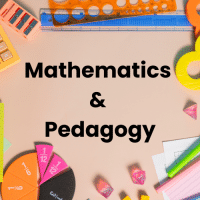Teaching Exam > Teaching Questions > The structure of intellect model was propound...
Start Learning for Free
The structure of intellect model was propounded by-
- a)Throndike
- b)Vernon
- c)J.P. Guilford
- d)Cattell
Correct answer is option 'C'. Can you explain this answer?
Most Upvoted Answer
The structure of intellect model was propounded by-a)Throndikeb)Vernon...
**The Structure of Intellect Model**
The Structure of Intellect (SOI) model is a psychological theory that was propounded by J.P. Guilford. This model provides a framework for understanding and measuring human intelligence based on different components and processes involved in intellectual functioning. Guilford introduced this model in the mid-20th century and it has since become influential in the field of cognitive psychology.
**J.P. Guilford**
J.P. Guilford was an American psychologist and educational reformer. He is known for his significant contributions to the field of psychology, particularly in the areas of intelligence testing and cognitive psychology. Guilford was one of the leading proponents of the idea that intelligence is a multifaceted construct with various dimensions and components.
**The Structure of Intellect Model**
The Structure of Intellect model proposes that intelligence is composed of three main dimensions: operations, contents, and products. These dimensions are further divided into sub-dimensions, resulting in a hierarchical structure of intellectual abilities. The model suggests that each individual possesses unique combinations of these abilities, which determine their intellectual strengths and weaknesses.
**Operations**
Operations refer to the mental processes or cognitive activities involved in intellectual functioning. Guilford identified five main categories of operations:
1. Cognition: This includes processes related to acquiring, processing, and storing information.
2. Memory: This involves the ability to encode, store, and retrieve information.
3. Evaluation: This refers to the ability to make judgments and assessments based on criteria.
4. Divergent Production: This involves generating multiple solutions or ideas.
5. Convergent Production: This refers to the ability to find a single correct answer or solution.
**Contents**
Contents refer to the specific types of information or knowledge that individuals possess. Guilford identified five main categories of contents:
1. Visual: This includes the ability to process and understand visual information.
2. Auditory: This involves the ability to process and understand auditory information.
3. Symbolic: This refers to the ability to understand and manipulate abstract symbols.
4. Semantic: This includes knowledge of word meanings and concepts.
5. Behavioral: This involves knowledge and understanding of behavior patterns.
**Products**
Products refer to the outcomes or results of intellectual activities. Guilford identified four main categories of products:
1. Units: This refers to the ability to recognize and apply basic elements or units of information.
2. Classes: This involves the ability to group or categorize information based on similarities or differences.
3. Relations: This includes the ability to understand and apply logical and mathematical relationships.
4. Systems: This refers to the ability to integrate and organize information into a coherent whole.
**Conclusion**
In conclusion, the Structure of Intellect Model was propounded by J.P. Guilford. This model provides a comprehensive framework for understanding and measuring human intelligence based on different dimensions, including operations, contents, and products. Guilford's model has been influential in the field of cognitive psychology and has contributed to our understanding of the complex nature of intelligence.
The Structure of Intellect (SOI) model is a psychological theory that was propounded by J.P. Guilford. This model provides a framework for understanding and measuring human intelligence based on different components and processes involved in intellectual functioning. Guilford introduced this model in the mid-20th century and it has since become influential in the field of cognitive psychology.
**J.P. Guilford**
J.P. Guilford was an American psychologist and educational reformer. He is known for his significant contributions to the field of psychology, particularly in the areas of intelligence testing and cognitive psychology. Guilford was one of the leading proponents of the idea that intelligence is a multifaceted construct with various dimensions and components.
**The Structure of Intellect Model**
The Structure of Intellect model proposes that intelligence is composed of three main dimensions: operations, contents, and products. These dimensions are further divided into sub-dimensions, resulting in a hierarchical structure of intellectual abilities. The model suggests that each individual possesses unique combinations of these abilities, which determine their intellectual strengths and weaknesses.
**Operations**
Operations refer to the mental processes or cognitive activities involved in intellectual functioning. Guilford identified five main categories of operations:
1. Cognition: This includes processes related to acquiring, processing, and storing information.
2. Memory: This involves the ability to encode, store, and retrieve information.
3. Evaluation: This refers to the ability to make judgments and assessments based on criteria.
4. Divergent Production: This involves generating multiple solutions or ideas.
5. Convergent Production: This refers to the ability to find a single correct answer or solution.
**Contents**
Contents refer to the specific types of information or knowledge that individuals possess. Guilford identified five main categories of contents:
1. Visual: This includes the ability to process and understand visual information.
2. Auditory: This involves the ability to process and understand auditory information.
3. Symbolic: This refers to the ability to understand and manipulate abstract symbols.
4. Semantic: This includes knowledge of word meanings and concepts.
5. Behavioral: This involves knowledge and understanding of behavior patterns.
**Products**
Products refer to the outcomes or results of intellectual activities. Guilford identified four main categories of products:
1. Units: This refers to the ability to recognize and apply basic elements or units of information.
2. Classes: This involves the ability to group or categorize information based on similarities or differences.
3. Relations: This includes the ability to understand and apply logical and mathematical relationships.
4. Systems: This refers to the ability to integrate and organize information into a coherent whole.
**Conclusion**
In conclusion, the Structure of Intellect Model was propounded by J.P. Guilford. This model provides a comprehensive framework for understanding and measuring human intelligence based on different dimensions, including operations, contents, and products. Guilford's model has been influential in the field of cognitive psychology and has contributed to our understanding of the complex nature of intelligence.

|
Explore Courses for Teaching exam
|

|
Question Description
The structure of intellect model was propounded by-a)Throndikeb)Vernonc)J.P. Guilfordd)CattellCorrect answer is option 'C'. Can you explain this answer? for Teaching 2025 is part of Teaching preparation. The Question and answers have been prepared according to the Teaching exam syllabus. Information about The structure of intellect model was propounded by-a)Throndikeb)Vernonc)J.P. Guilfordd)CattellCorrect answer is option 'C'. Can you explain this answer? covers all topics & solutions for Teaching 2025 Exam. Find important definitions, questions, meanings, examples, exercises and tests below for The structure of intellect model was propounded by-a)Throndikeb)Vernonc)J.P. Guilfordd)CattellCorrect answer is option 'C'. Can you explain this answer?.
The structure of intellect model was propounded by-a)Throndikeb)Vernonc)J.P. Guilfordd)CattellCorrect answer is option 'C'. Can you explain this answer? for Teaching 2025 is part of Teaching preparation. The Question and answers have been prepared according to the Teaching exam syllabus. Information about The structure of intellect model was propounded by-a)Throndikeb)Vernonc)J.P. Guilfordd)CattellCorrect answer is option 'C'. Can you explain this answer? covers all topics & solutions for Teaching 2025 Exam. Find important definitions, questions, meanings, examples, exercises and tests below for The structure of intellect model was propounded by-a)Throndikeb)Vernonc)J.P. Guilfordd)CattellCorrect answer is option 'C'. Can you explain this answer?.
Solutions for The structure of intellect model was propounded by-a)Throndikeb)Vernonc)J.P. Guilfordd)CattellCorrect answer is option 'C'. Can you explain this answer? in English & in Hindi are available as part of our courses for Teaching.
Download more important topics, notes, lectures and mock test series for Teaching Exam by signing up for free.
Here you can find the meaning of The structure of intellect model was propounded by-a)Throndikeb)Vernonc)J.P. Guilfordd)CattellCorrect answer is option 'C'. Can you explain this answer? defined & explained in the simplest way possible. Besides giving the explanation of
The structure of intellect model was propounded by-a)Throndikeb)Vernonc)J.P. Guilfordd)CattellCorrect answer is option 'C'. Can you explain this answer?, a detailed solution for The structure of intellect model was propounded by-a)Throndikeb)Vernonc)J.P. Guilfordd)CattellCorrect answer is option 'C'. Can you explain this answer? has been provided alongside types of The structure of intellect model was propounded by-a)Throndikeb)Vernonc)J.P. Guilfordd)CattellCorrect answer is option 'C'. Can you explain this answer? theory, EduRev gives you an
ample number of questions to practice The structure of intellect model was propounded by-a)Throndikeb)Vernonc)J.P. Guilfordd)CattellCorrect answer is option 'C'. Can you explain this answer? tests, examples and also practice Teaching tests.

|
Explore Courses for Teaching exam
|

|
Signup for Free!
Signup to see your scores go up within 7 days! Learn & Practice with 1000+ FREE Notes, Videos & Tests.























